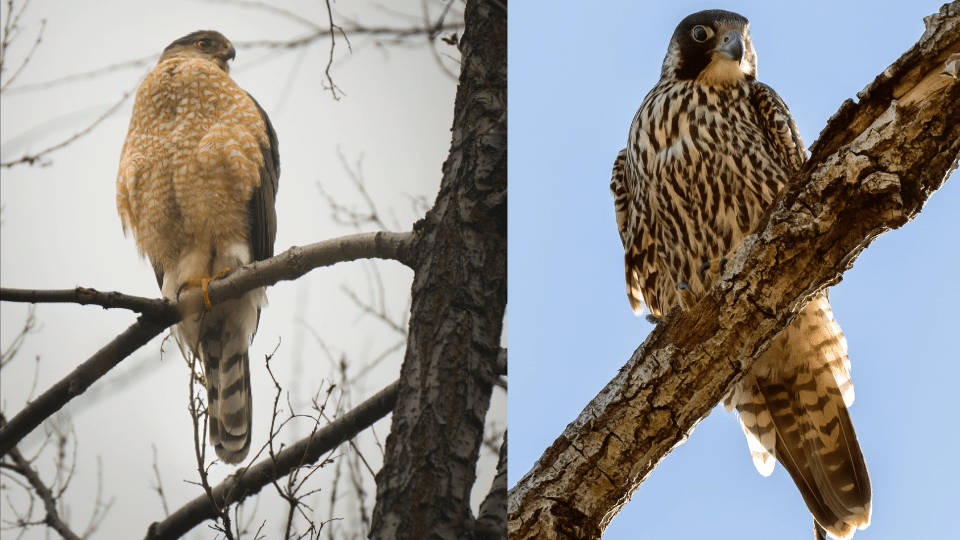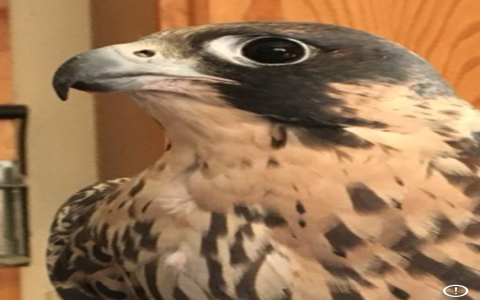You know, for the longest time, I just kinda lumped hawks and falcons together. Big birds of prey, sharp bits, swooping around – seemed pretty much the same deal to me. If someone pointed and said “Look, a hawk!” or “Wow, a falcon!” I’d just nod along, not really getting the difference. Honestly, I probably couldn’t have told you one from the other if my life depended on it.

Then one afternoon, I was out for a walk, just minding my own business, and this bird just blasted across the sky. Super fast. And my friend, who knows a bit more about these things, casually goes, “Nice falcon.” And I’m standing there thinking, “How in the world did he know that so quick?” It kinda bugged me, you know? So, I decided, right, I’m gonna figure this out. Not like I was going to become a bird expert overnight, but I wanted to at least get the basics down.
My Highly Unscientific Investigation
So, I started actually paying attention. When I was out, especially in more open areas, I’d look up a bit more. I even dug out my old pair of binoculars from the back of the closet. My first “method” was pretty simple: just watch. See how they flew, what they looked like from a distance.
After a bit of just looking, and okay, maybe a tiny bit of asking around and some quick phone searches when I saw something interesting, I started to pick up on a few things. It wasn’t rocket science, but it was like a little puzzle.
Here’s what I started noticing, my personal checklist, if you will:
- Wing Shape: This was a big one for me. Falcons, man, their wings are different. They’re kind of narrow and pointy, almost like a boomerang or a fighter jet wing. Hawks, on the other hand, tend to have broader, more rounded wings. You see them soaring, and those wings look like they’re made for catching the air.
- How They Fly: This tied into the wings, I guess. Those falcons with their pointy wings? They fly fast. Like, direct, powerful wingbeats. Flap-flap-flap-glide, but really aggressive and quick. Hawks, I noticed, do a lot more soaring in circles, riding the air currents. They can be fast too, but it feels different, more… deliberate, maybe?
- Size and Build (Generally): Now, this can be tricky ’cause there are big falcons and small hawks, but generally, falcons often look a bit more compact and streamlined. Hawks can appear bulkier, especially some of the bigger ones like Red-tailed Hawks.
- The Head: Okay, this one’s harder from a distance, but if you get a decent look, sometimes you can see a falcon has this sort of “toothed” beak, a little notch. And they often have that dark “moustache” stripe below their eyes. Hawks, not so much on those specific features. Their heads look a bit more, well, “hawkish,” if that makes any sense. Broader, maybe.
I remember this one time, I was at a local park, and this bird was way up high. At first, I was stumped. Then it did this series of really rapid wingbeats and then just sliced through the air, arrow-straight. And I thought, “Pointy wings, super direct flight… gotta be a falcon.” And when it came a bit closer, sure enough, I could just make out that sleeker profile. Felt pretty good, not gonna lie.

It’s not like I aced it every time. Sometimes, a Cooper’s Hawk would zip through the trees, and for a second, the speed would make me think “falcon,” but then I’d see the more rounded wingtips as it banked. It’s a learning process, right?
So, Where Am I At Now?
Am I an ornithologist? Absolutely not. I still get them mixed up sometimes, especially if it’s just a quick glance or they’re really far away. But, I can definitely say I’m way better than I was. Now, when I see a bird of prey, my brain automatically starts going through that little mental checklist: wings, flight style, general shape.
For me, the easiest tell-tale signs are still those pointy, swept-back wings and the super-fast, direct flight of a falcon versus the broader wings and more frequent soaring of a hawk. It’s like comparing a sports car to a sturdy SUV. Both get you there, but in a very different style. It’s been a fun little thing to learn, just by keeping my eyes open. Makes those walks a bit more interesting, too.
